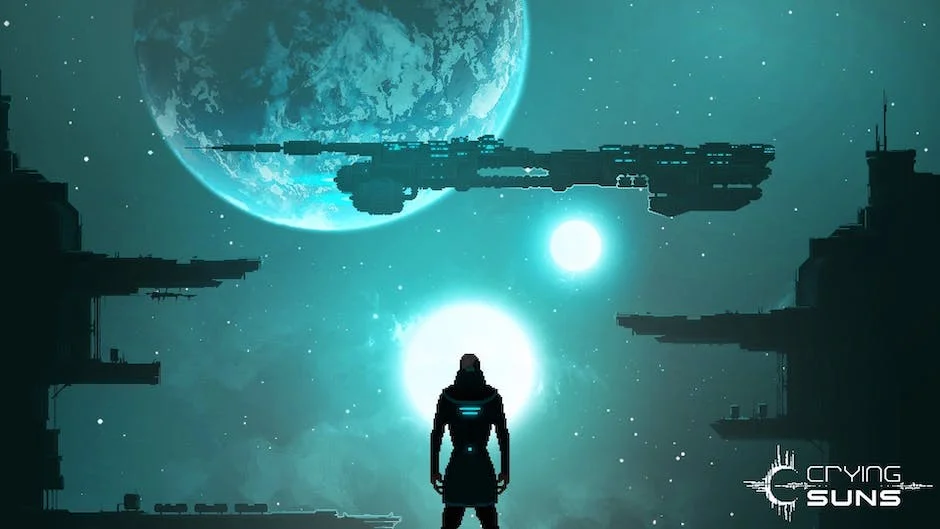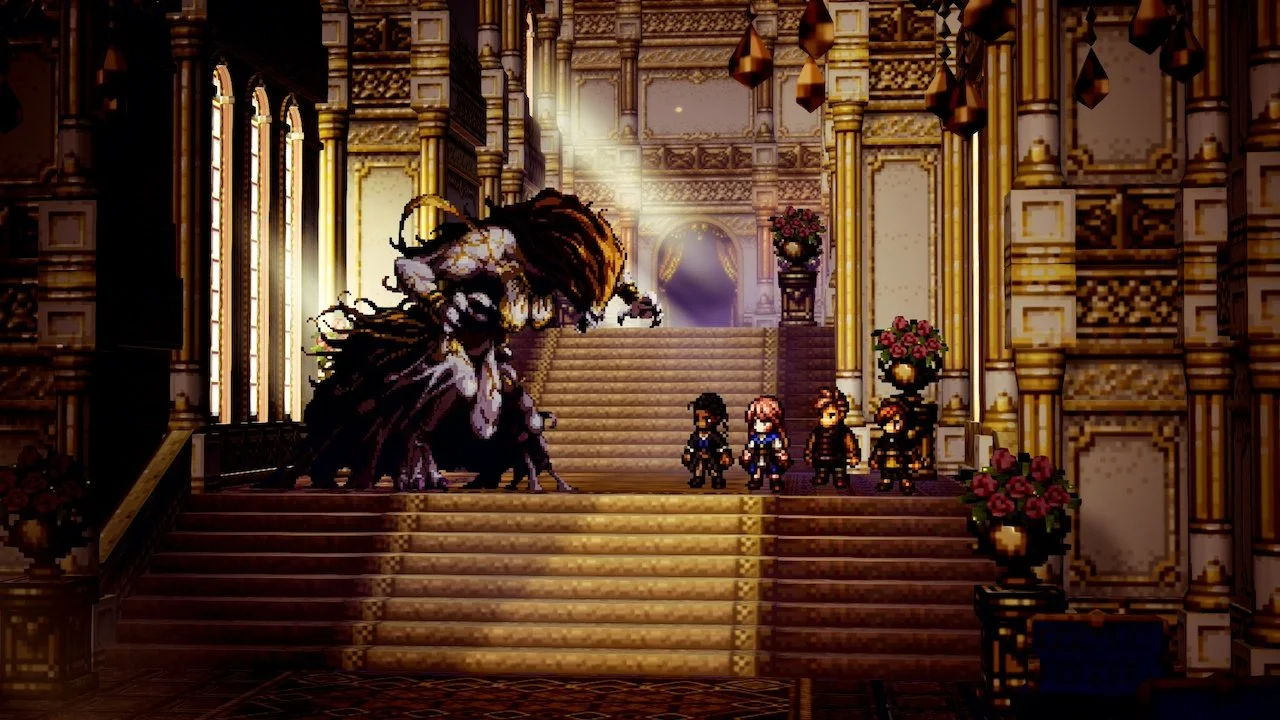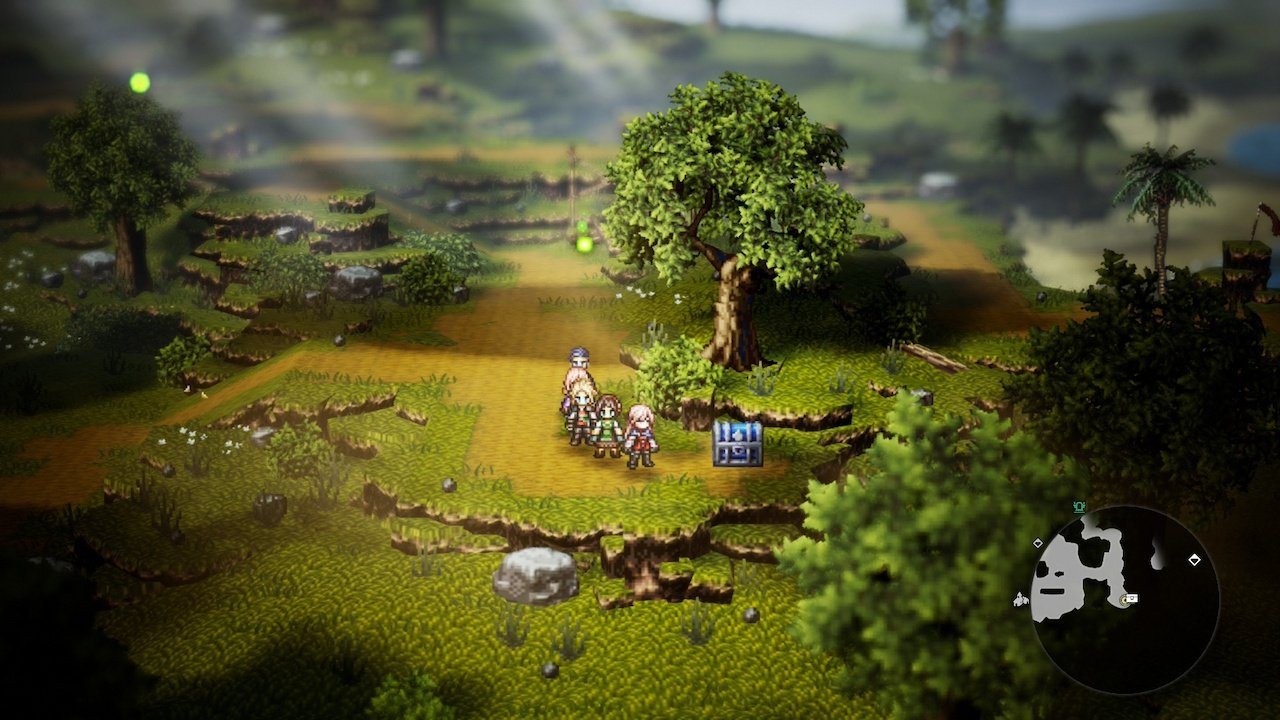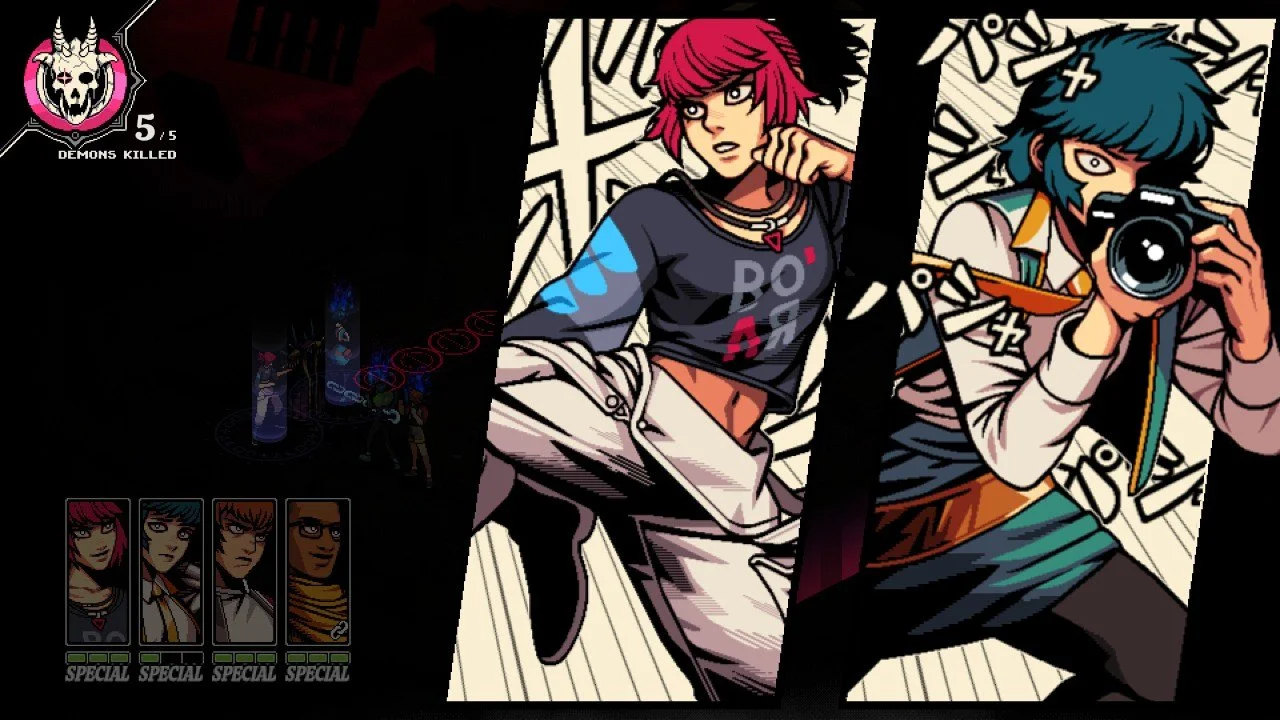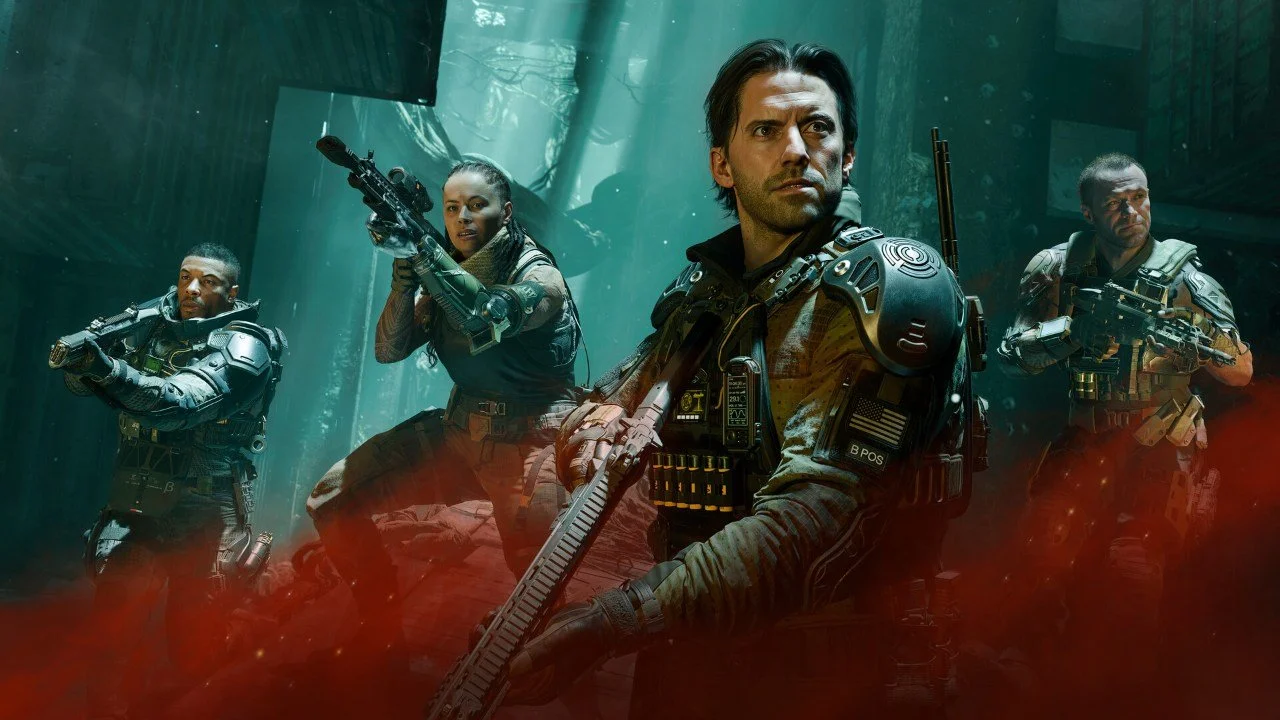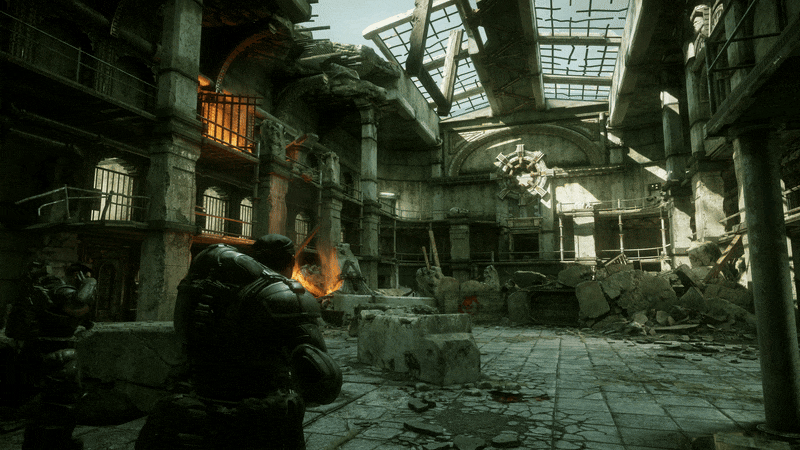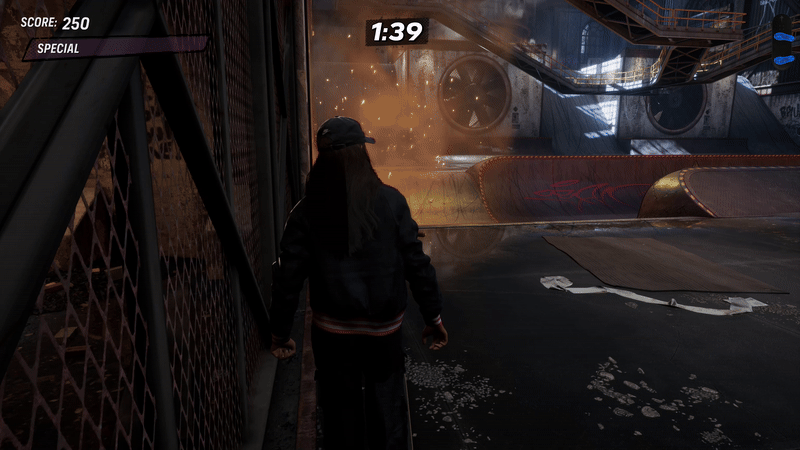Steam code provided by Alt Shift
Crying Suns is a rogue-like narrative that fuses real-time tactics with the cold darkness and violent depths of space. French studio Alt Shift has created an experience that builds off of predecessors like FTL but with a greater focus on story and atmosphere. The traditional elements of rogue-like games are all present, but they support the complex sci-fi themes that saturate the game. The developer cites influences like Dune and Foundation, but Crying Suns has established a captivating world of its own for players to explore. Resource management, tactical space battles, and the planetary surveys all factor into the gameplay as you search for answers to what’s happened in this gripping narrative.
Story
Crying Suns thrusts the player into a confusing world where humanity is dying. As a clone of the famous Admiral Ellys Idaho, you must discover the reasons behind the collapse of the empire. Your crew consists of Kaliban, the last known OMNI in existence, and the dedicated officers and grunts on your battleship. With those limited resources, the player will traverse the dangerous voids of space and fight off the warring factions who intend to rule over the dying vestiges of the human race.
Like space, the atmosphere is dark and unpredictable. Uncertainty lurks around every asteroid and near every star. Will the next encounter be hospitable or will it spell your doom? These questions lurk in the back of your mind as you untangle the web of your past. Who is Ellys Idaho? And what happened to the empire? The answers are far away in clusters and systems beyond your reach. It will take sacrifice and strategy to stay alive long enough to find the truth. But it’s worth it. The characters accompanying you on the interstellar journey and the mysteries of the universe that you unlock as the story progresses construct an inviting reality while playing Crying Suns. I became invested in the lives of my crew, and I sought an explanation for the current plight of the human race. The truth is unsettling, and the choices you have to make are never easy.
As a whole, Alt Shift has done a great job in crafting a compelling story that justifies the mechanics of the game and the actions of your clone. Crying Suns is a rogue-like where the grind fits into the trajectory of the characters and their mission.
Gameplay
Gameplay can be as challenging as you make it. The difficulty set at the beginning of a voyage will determine the scarcity of resources available at the outset as well as the tenacity of your opponents. The depth of enemy squadrons and the persistence of their attacks can be adjusted. You may find that you want to decrease the strength of enemy ships or, conversely, you might want to face a steeper challenge. That’s all possible. Mouse and keyboard are recommended, though. With a tactical game that revolves around real-time decision-making, I definitely valued the precision and speed of a mouse over a trackpad. Alt Shift has included a tactical pause feature, though, which helps the player to re-orient if necessary and decide the best use of their weaponry and their squadron fleets.
All of the squadrons that can be deployed during a battle have strengths and weaknesses. Drones, for example, benefit from higher movement speeds and increased damage output against frigates, but they’re vulnerable to ordinary fighters. Each unit possesses similar attributes, and as the commander you must coordinate the battle plan from afar. Strategy becomes more complex as the game progresses.
Crying Suns is broken up into chapters, and you start over every time a new chapter unfolds. The reasoning for that is explained in the story, but it means that the pattern of play is recursive. Enemies are weaker in the first system that you visit, and the difficulty steadily rises from there. Combat will progress from one or two squadrons and maybe one battleship weapon to multiple squadron docks rotating units out into the battlefield while two or three weaponized variants of flagship tech further destabilize the integrity of your fleet. That heightened pressure never feels unfair, though, and I felt prepared for these harder fights as my understanding of the strategy improved over time.
Expeditionary missions to system planets provide the opportunity to modify or upgrade your arsenal. Ship officers and commandos will search for scrap, which is the currency used to buy, sell, repair, and upgrade anything in the game. But these missions might also recover stranded officers, unused battleship weapons, or rare squadrons. Take advantage of these chances to bolster your force.
Visuals
Alt Shift pulls you into the universe with the gloomy colors of space, the grotesque mutations of enemies, and the barren worlds of a dead empire. The pixelated visuals assure me of the setting every time I dive into the game, and I thought the sci-fi atmosphere was lovingly crafted by fans of the genre. The themes of the game are reinforced by the art style that contrasts deep blues and moody blacks with the bright screens of a ship’s HUD. The graphics will not blow you away, but you don’t have time to worry about that when squadrons of drones, fighters, and frigates are flying toward you. The simple aesthetics draw you into the labyrinthine story and fast-paced gameplay.
Replayability
There is a lot of replay value built into Crying Suns. There were whole swaths of systems that I was unable to explore on my first run. The lack of fuel and impending faction alerts means that travel through a sector has to be intentional and quick. You can’t float from cluster to cluster like a tourist. Your movements are direct. Your time is limited. That means that pieces of the story remain to be uncovered, and my experience could be completely different the next time I venture into the void. Also, I would like to see how thorny the hard difficulty is. With fewer resources and a stronger enemy, it would be a greater obstacle to overcome. So there are more hours ahead of me.
What It Could Have Done Better
Where I felt Crying Suns to be lacking was in the diversity of encounters. Given the rogue-like elements of the game and the iterative journeys of Admiral Ellys Idaho and his cloned crew, it makes sense that you would encounter things more than once. But I didn’t feel that the procedurally-generated universe provided enough variety in the people and events that I encountered. Multiple times I would engage with ships and planets where the inhabitants had the exact same dialogue trees and identical outcomes. That repetition became stale by the end of the game. I wished for more content to contrast my campaigns through space. Systems were comprised of different factions and new revelations in the main story, but the limited filler content didn’t impress. Strengthening that aspect of the game would have improved the overall experience.
Verdict
Crying Suns does right by its predecessors, all while carving out its own space in the genre. The sci-fi tactics game tosses you into the unknown with a need to find answers and a battleship to blast away the opposition. With solid mechanics and a superb story, it’s a good time waiting to be had. Prepare for battle and prepare to die, all in the name of the empire.







